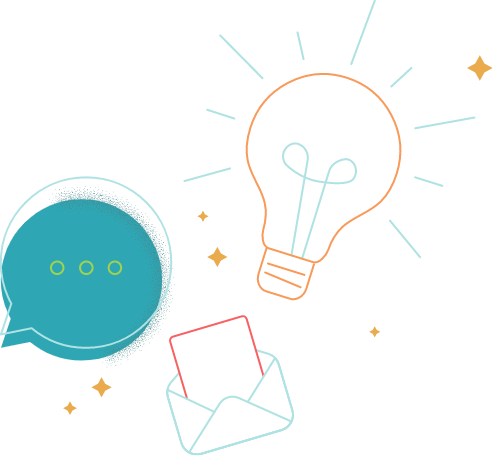ChatGPT is not every marketer’s best friend, but everyone in the industry is ChatGPT-curious. If you haven’t yet opened OpenAI’s most viral product, I’d bet you’ve at least thought about it.
ChatGPT can be a really useful tool — if you know how to wield it well. But haphazardly or half-heartedly carrying out marketing tasks with ChatGPT can easily go awry.
A few Brafton folks have spent considerable time finding ways to leverage ChatGPT effectively for our internal marketing efforts behind the scenes. Along the way, they’ve learned a lot about how to make the most of the tool, and I have the insight!
5 Pieces of Advice For Using ChatGPT In Marketing
The beauty of advice is that you can take it or leave it. Perhaps you’re already using ChatGPT in a way that aligns with these tips, or maybe you’ve yet to touch it and need an idea of where to start. Wherever you’re at in your Gen AI journey, consider the following:
1. Take Your Time When Creating Content
ChatGPT’s ability to compose basically any type of content with the right prompt means you can slash the time it takes to create, get approved and launch a marketing asset. That said, we know Gen AI isn’t perfect, and if you move too quickly, you may overlook its faults.
While taking your time may seem counterintuitive to saving time, going slow and being intentional while using ChatGPT is one of the best ways to get good results. Break your content creation process down into small chunks as you prompt ChatGPT. This gives you many opportunities to manually intervene as needed and ensure that the final product is as close to your objective as possible.
When you’re first getting started, try to:
- Spend extra time refining your prompt to include all necessary details, like the target audience’s pain points or desired outcomes.
- Review the content line by line and ask for improvements such as a more engaging hook, more specific examples or clearer calls to action.
One thing to remember is that any ChatGPT output should also be carefully reviewed by a human — preferably one who’s in tune with your brand guidelines, target audience persona marketing goals; and who’s skilled at proofreading, fact-checking and editing content.
2. Don’t Overlook Its Analytical Abilities
As a marketer, you always have numbers to crunch, and you probably want those numbers to tell a story. While everyone’s fascinated with ChatGPT’s word-processing abilities, don’t forget about robots’ original and true strength: math.
In a LinkedIn poll, our audience told us that hardly anyone uses ChatGPT for benchmark analysis. It’s a shame, because benchmarking is hard, and we know from our content marketing management survey that lots of marketers often push this important activity aside.
We also know from experience that ChatGPT can be handy for analyzing data inputs. For example:
- Identifying trends in survey responses.
- Analyzing customer feedback for recurring themes.
- Extracting key insights from sales performance data.
For the best results, be sure to use clean and structured data. From there, you can ask ChatGPT to do all kinds of things, such as:
- Spot patterns or provide summaries.
- Group or classify data for clarity.
- Extract actionable insights.
- Interpret data in light of industry trends or benchmarks.
- Break down complex analyses into smaller, iterative steps.
- Provide ideas for presenting data visually.
3. Supercharge Your Keyword Research Process (but Don’t Replace It)
Keyword research is the No. 1 activity in SEO — literally; you have to do this step before anything else if you want to rank. But keyword research is tricky. It’s a long process that’ll make your eyes hurt from all the data entry (it’s worth it). But did you know that Gen AI can help alleviate some of that pressure (and eye strain)?
ChatGPT can provide useful jumping-off points to springboard your keyword research that you may not have considered before. The right prompts and re-prompts can provide you with creative yet targeted long-tail keywords that are well-suited to your audience’s needs and interests.
Here are a few example use cases and prompt ideas:
- Generate Initial Keyword Ideas: “Generate 20 long-tail keywords related to [industry/topic]. For example, for ’email marketing,’ provide terms relevant to small businesses.”
- Expand on a Seed Keyword: “Take the keyword ’email automation’ and provide 15 related long-tail variations.”
- Tailor Keywords for Specific Audiences: “Suggest 10 long-tail keywords about ‘fitness apps’ that would appeal to new moms.”
- Re-Prompt for Depth: “Focus on lower-competition keywords”; “Suggest keywords based on recent Google Trends for this topic.”
4. Don’t Rely On ChatGPT Too Heavily
Once you nail down a formula that works for you and you start getting outputs you’re pleased with, it can be easy to let the allure of ease pull you in and persuade you to use ChatGPT and other Gen AI tools for everything.
My advice: Use it when it makes sense, but don’t throw caution to the wind — especially when it comes to creative content. Rely too heavily on AI to write marketing copy and you’ll leave yourself little opportunity to be original and flex your creative muscles.
It all comes back to that ever-important piece of advice: use ChatGPT as a tool to augment your workflows and processes, not a replacement for the skills you’ve worked hard to cultivate.
5. Have Fun With It
This last piece of advice makes me feel like a high school sports coach. “Most importantly, have fun!” But it’s true here, too. Gen AI is an incredible technology, but it’s also flawed in many ways. If you can help it, don’t take it too seriously. You (and ChatGPT) will certainly make mistakes. Just enjoy the process and improve how you interact with it as you go.
It’s Not a Whole New Ball Game
Marketing with ChatGPT hasn’t necessarily upended the industry as we know it like many thought it would. It’s changed it, for sure. But your goals are still the same and so are your values and mission. ChatGPT is just another tool in your toolkit. And with this advice, you’ll be better prepared to make the most of it.






